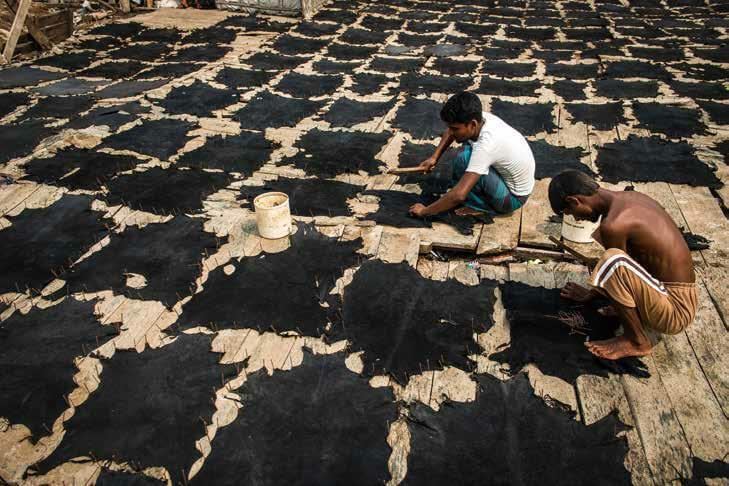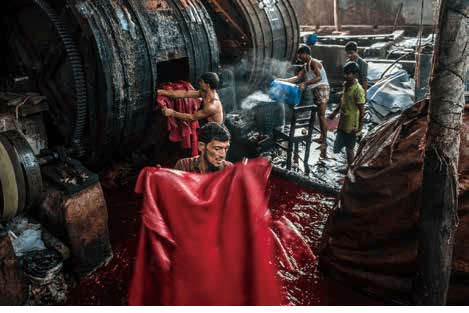Issue:

Tannery: photographs by Akihito Yoshida
THERE IS A SOUTHWESTERN district of Dhaka, the capital city of Bangladesh, called Hazaribagh that is known for its densely concentrated oxhide processing. Ninety percent of domestic oxhide production comes from Hazaribagh and is exported worldwide.
Japan is the biggest importer of oxhide from Bangladesh, mainly in the form of about four million pairs of leather shoes per year.
While the oxhide industry is the second biggest source of foreign currency after the textile industry, according to international environmental watchdog Blacksmith Institute, Hazaribagh is one of the 10 most toxically polluted areas in the world.
There are 150 to 200 oxhide factories with roughly 20,000 workers who handle the toxic chemicals with bare hands and feet. There are no safety regulations. Unfiltered incinerators and dumping of unprocessed chemical materials and hazardous waste are common sights. Workers who spend substantial amounts of time here have all sorts of physical problems and a short life expectancy.

I headed to Hazaribagh to bear witness to the conditions of the workers in the oxhide industry.
Akihito Yoshida taught Japanese for a year at a university in Thailand followed by six years in a Kyoto elementary school. He started a career in photography in 2010. He has published two books, Brick Yard (2014) and Tannery (2016) and has won several photographic awards.

